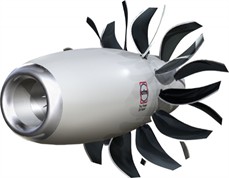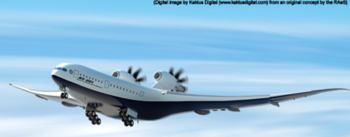Industry on track to deliver green aircraft by 2020
 EurActiv - Industry is on track to ensure “carbon-neutral growth” in the
EurActiv - Industry is on track to ensure “carbon-neutral growth” in theaviation sector from 2020, but strengthened European Union support
for research and development (R&D) is vital to help
manufacturers deliver the green technologies required, François
Gayet, secretary-general of the AeroSpace and Defence Industries
Association of Europe (ASD), told EurActiv in an interview.
reach our ambitious targets. But now, at mid-term, not only can we
say that we will reach these targets collectively, but we are also
working on new targets for 2030 and 2050,” said Gayet.
He stressed that the global nature of the aerospace industry and
said “today’s two big competitors [US firm Boeing and European
company Airbus] are competing head-to-head” to adopt the new
technologies.
Meanwhile, an EU research programme to develop green
aircraft (the so-called ‘Clean Sky’ Joint Technology Initiative;
JTI) and a potential follow-up programme to support R&D on the
sector are “vital” to help European industry keep up with
cutting-edge research and development, Gayet insisted.
When a new generation of aeroplanes is launched to replace the
Airbus A320 family, for example, the choice of technology for those
planes will need to be made 7-10 years in advance, and if a
manufacturer is not at the technological forefront “it could lose
future competition,” Gayet explained.
Economic incentives to go green
Declaring that the aviation sector would achieve “carbon-neutral
growth” from 2020, Gayet underlined that environmental regulations
are not the only incentive to develop greener technologies. There
are also economic reasons to “green” aviation, as reduced fuel
consumption and improved maintenance efficiency lowers costs for
operators, he said.
“In the end, it is what I would call a virtuous circle,”
combining cost reduction with an improved environmental footprint,
he explained.
Biofuels show great promise
“It is clear that the development of the future generation of
biofuels could help a lot,” he said. In particular, “drop-in
biofuels,” which can be mixed with traditional kerosene and put
inside the same tank, do not require the development of new engines
for alternative fuels, Gayet explained.
However, he added that manufacturers are “a bit cautious” about
the sustainability of biofuels, especially the use of non-food
crops, for example.
While crops like jatropha, camelina and algae have shown their
potential for future biofuel use, “massive investments are required
to bring the fuels out of laboratories” and scale up production,
Gayet said.
Aircraft manufacturers play a very limited role in developing
biofuels, he explained, adding that “they have done their job
through testing and demonstrating that the fuels work and can be
used for flying”.
But other players still need to play their part. “We don’t want
to bet 100% on the fact that biofuels will solve all problems. This
is why we need to keep on investing in technologies to reduce
weight and fuel consumption,” he added.
Asked whether research into certain technology fields is
advancing faster than others, Gayet said significant investments
have been made in open rotor technology.
An open rotor engine is essentially a turboprop with two rows of
blades, or propellers, which can operate efficiently at higher
speeds than a conventional turboprop. The blades of a turboprop
tend to spin air out, rather than push it back in. In an open rotor
engine, the forward propeller pushes the air backwards, while the
rear one sucks it in. While open-rotor airliner configurations have
been studied for many years, there are questions about likely
airworthiness rules in areas such as engine layout and blade
containment. The technology is also much noisier than its main
competitor, the geared turbofan engine, which operates in a closed
structure.
He said the technology had shown a lot of promise for reducing
CO2 emissions, expressing hope that it could be implemented earlier
than the next generation of aeroplanes. Existing planes can be
retrofitted with such engines without changing their airframes, he
said.
CO2 standards for aircraft
As for CO2 standards for aircraft, which are currently being
drafted by the International Civil Aviation Organisation (ICAO) for
implementation in 2013, Gayet said that “we feel it could be a good
idea, but we need to make sure that we are cautious about the way
we want to implement it”.
He particularly stressed the need for a thorough technical
review and a feasibility study prior to implementation to
demonstrate that the standard is genuinely beneficial.
In addition, “we need to make sure that the standard will not
create market distortion,” he warned, referring to airlines’
different fuel-use strategies, which result in different
environmental footprints.
“We will also need to see whether the standard will apply only
to new aircraft or also to aircraft already in service, which is
another issue,” he said, adding that a lot of work must still be
done before consensus can be reached.
 Aviation and EU 2020 strategy
Aviation and EU 2020 strategy
Gayet said the aerospace industry can play a role in the EU 2020
strategy, in that investments in the sector could help to develop
breakthrough technologies to ensure the sustainable development of
air transport.
“EU lawmakers should understand that actions need to be taken
now to ensure that we have the right green technologies in place in
2050 to meet our ambitious targets,” he said.
Gayet further underlined that the effort on public-private
partnerships should be maintained and strengthened, and that a new
generation of programmes for funding R&D should be developed
immediately.
target=”_blank”>To read the interview in full, please click
here.

